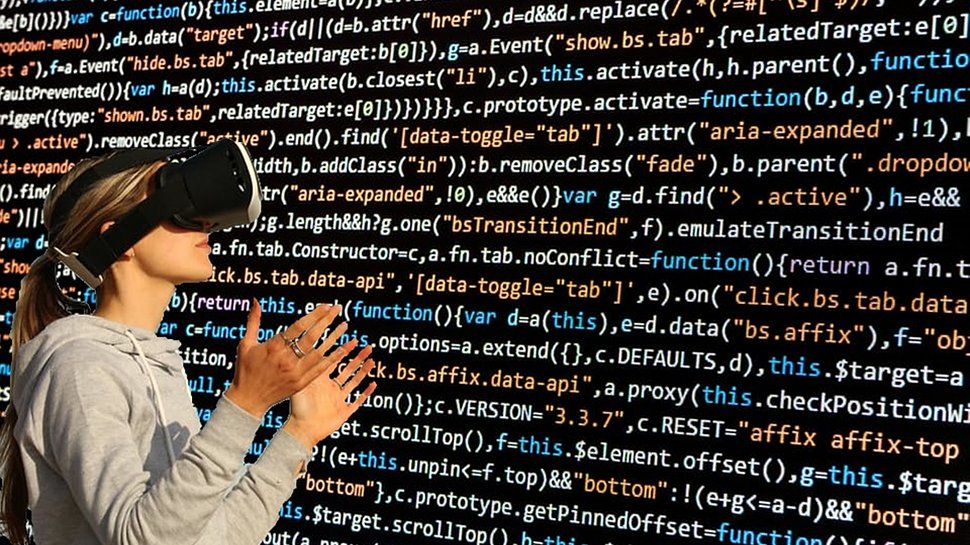What if Darwin wore VR glasses?
VR is more than just about video & gaming

Richard Petley is UK Country Leader and VP of Technology, Oracle.
Today most people think of gaming, virtual reality glasses and video when asked about virtual reality. The concepts of virtual reality in these areas have been around for some years, but what if we look beyond the media space.
Virtual reality is becoming a thriving part of many businesses; 50 per cent of companies not currently using virtual and augmented reality will start experimenting with it in the next 2-3 years, and 82 per cent of adopters say the benefits are meeting or exceeding expectations.
Remember virtual reality is much more than gaming and video. Increasingly, it is being powered by predictive analytics and creating virtual data points to create virtual environments to help us see a whole new future of possibilities. Do you realise that the egg you’re eating will soon be created through virtual reality? Or that the quality of the meat will be derived by virtual reality?
Using VR in agriculture
For one example of innovation, researchers at Oxford have applied genetics data to virtual reality, to visualise how genes and strings of DNA sit within the chromosomes. Their resulting 3-D presentation clearly showed how genes sit in relation to each other and how they interact with each other. And the purpose? Visualising such interactions helps us better understand how DNA works and develops.
As Stephen Taylor, Head of the Computational Biology Research Group at the MRC Weatherall Institute of Molecular Medicine, University of Oxford, stated: 'Being able to visualise such data is important because the human brain is very good at pattern recognition – we tend to think visually.’
While not all companies see the opportunity yet for virtual reality in their business model, most are engaging in data driven strategies to enable the storage and analytics of data, tomorrow. Little do they realise that this type of activity can lead them on a journey into virtual reality.
As a case in point, companies in animal breeding are moving towards virtual breeding. In animal breeding, the creatures involved need to be continuously monitored so that a thorough understanding of their physiological and psychological conditions can be gained, given that what is desired are best in breed animals or dairy and meat products.
Sign up to the TechRadar Pro newsletter to get all the top news, opinion, features and guidance your business needs to succeed!
VR and data
This can result in thousands of data points being continuously saved minute by minute, detailing room temperature, body size, body weight and the beast’s vital statistics, such as heart rate. Even in fish breeding, the fish are scanned by ultrasounds several times a day.
The explosive amount of data derived from the animals makes it possible to undertake advanced and predictive analytics. From the results, the breeding company can create virtual animals and breed their offspring virtually, creating ‘what if’ scenarios around changes in feeding and environmental conditions. By doing so virtually, they can create a much faster time to market as they no longer have to go through the painstaking process of raising the physical animals to see how they respond to different circumstances, which can take years.
Most importantly, however, it means far fewer real animals are needed and the ones that do ‘come to life’ experience less stress thanks to non-invasive appliances such as ultrasound. Additionally, the infrastructure to support such work in terms of breeding pens and laboratories, are reduced, resulting in a significant cost reduction on the R&D side.
- Need more data? Find the best cloud storage options here
The potential for VR in business
As you can see, by only considering how virtual reality can impact the animal world, a massive amount of opportunities can come to light for the agricultural sector, and related animal testing and fauna related educational sector. Soon it will be of little surprise to find that the quality of our eggs and bacon is increasingly enhanced through virtual reality.
Yet what about enterprises outside of agriculture and animals? Although most companies might not see where virtual reality fits into their business, many are already using what drives it: machine learning and data. As such, the more creative and visual organisations out there should start to look to the virtual world, to see how it helps them speed up time to market, reduce cost, lower risk, increase sustainability and augment the customer experience.
Fields heavily involved in design and manufacturing are no strangers to running simulations before testing their ideas out in the field. However, nothing immerses clients or customers like a virtual reality demo where they can view and experience the product as they choose. Imagine architecture software that designs and builds its construction in a virtual reality landscape.
The firm is able to preview and demonstrate to the customer how the structure will look, and how it will feel to walk around in it before the structure is built. Any customer pain points can be addressed at an early stage, avoiding problems before they emerge or customer dissatisfaction once the building is finished.
The opportunity to leverage virtual reality is all around us, you just need to see the virtual reality for your business.
Richard Petley is UK Country Leader and VP of Technology, Oracle.
Richard Petley is UK Country Leader and VP of Technology, Oracle. He has over two years of experience.
